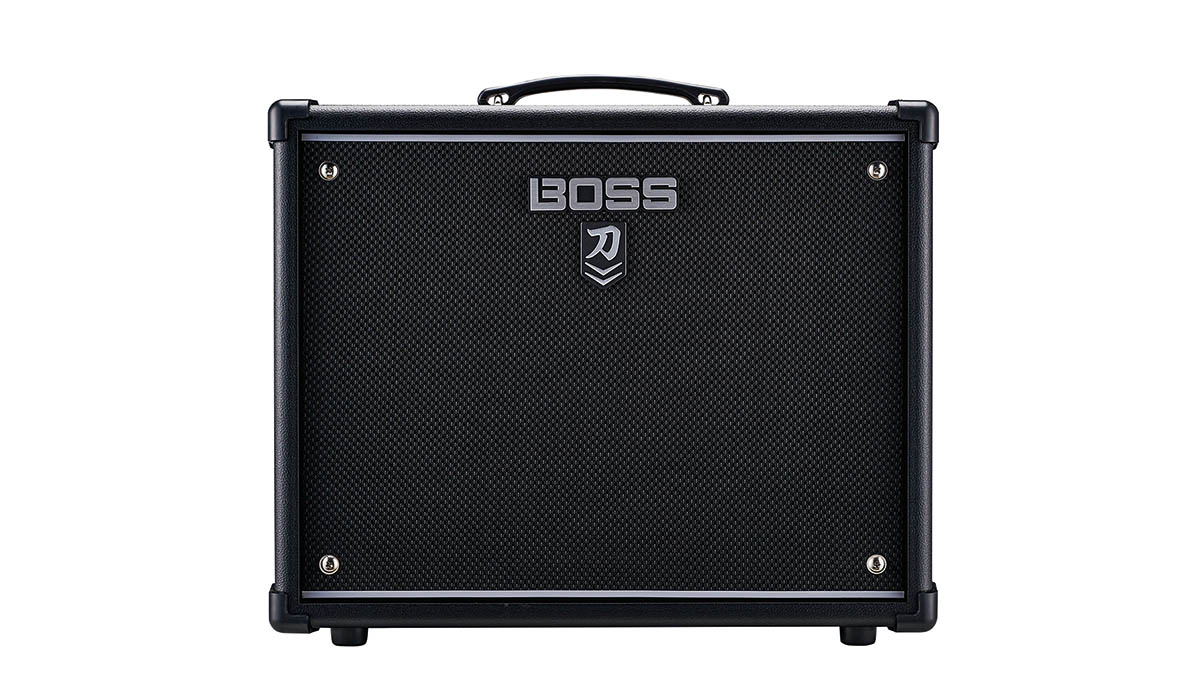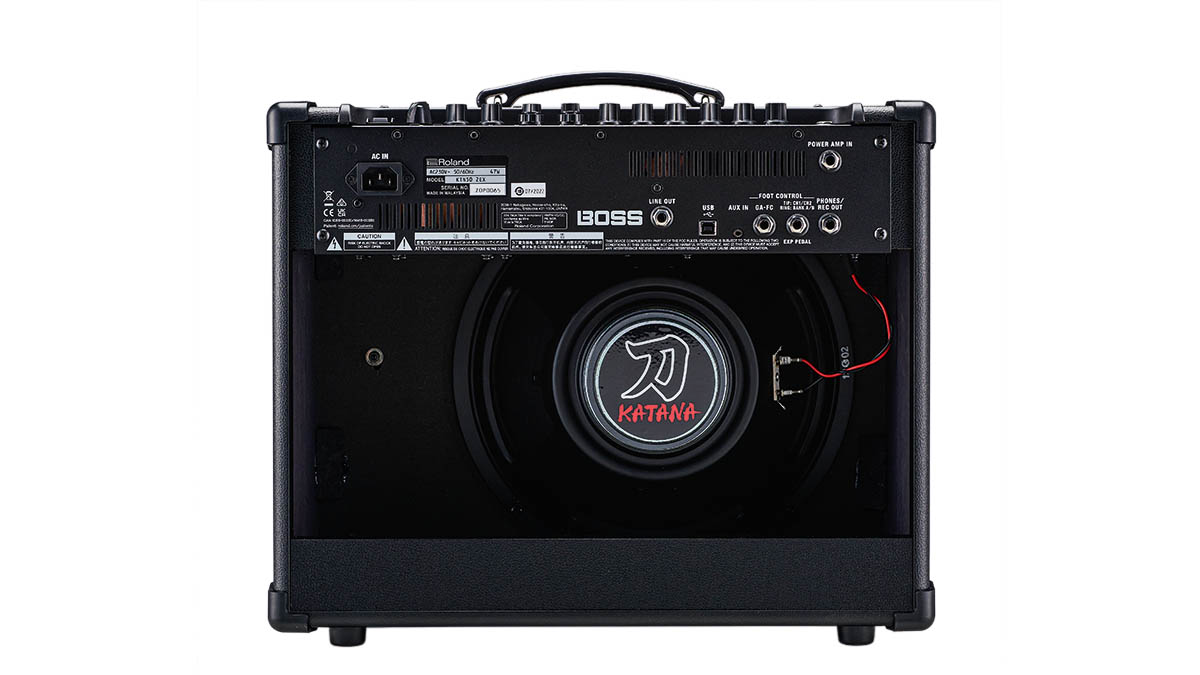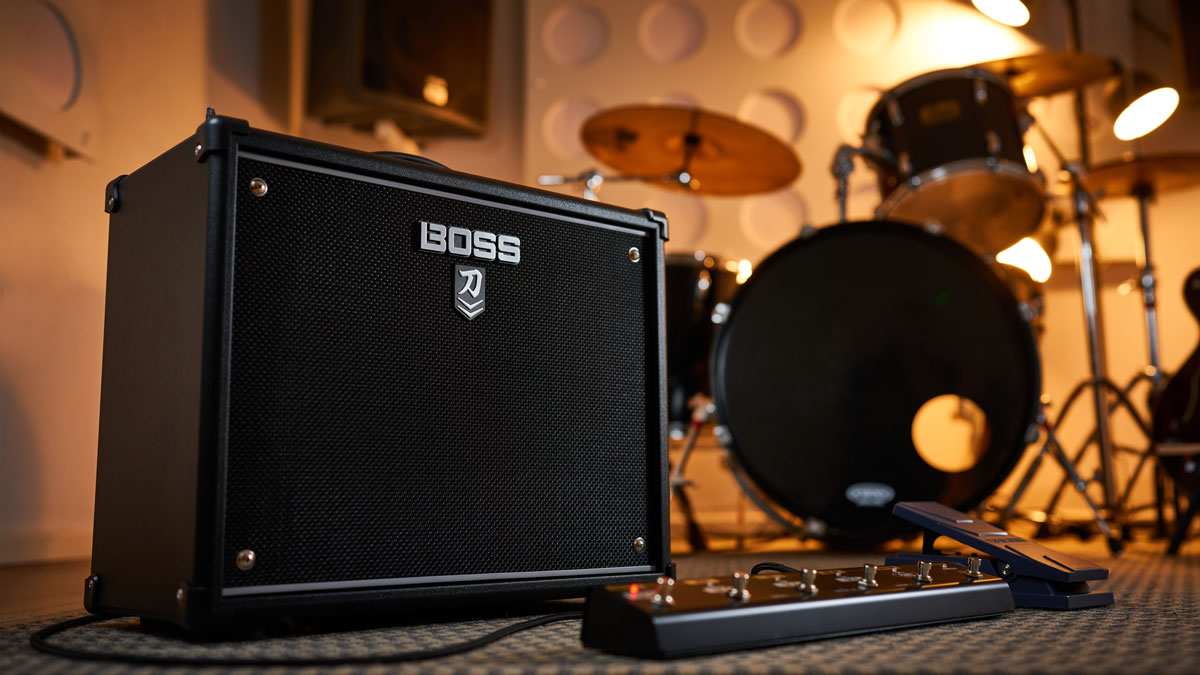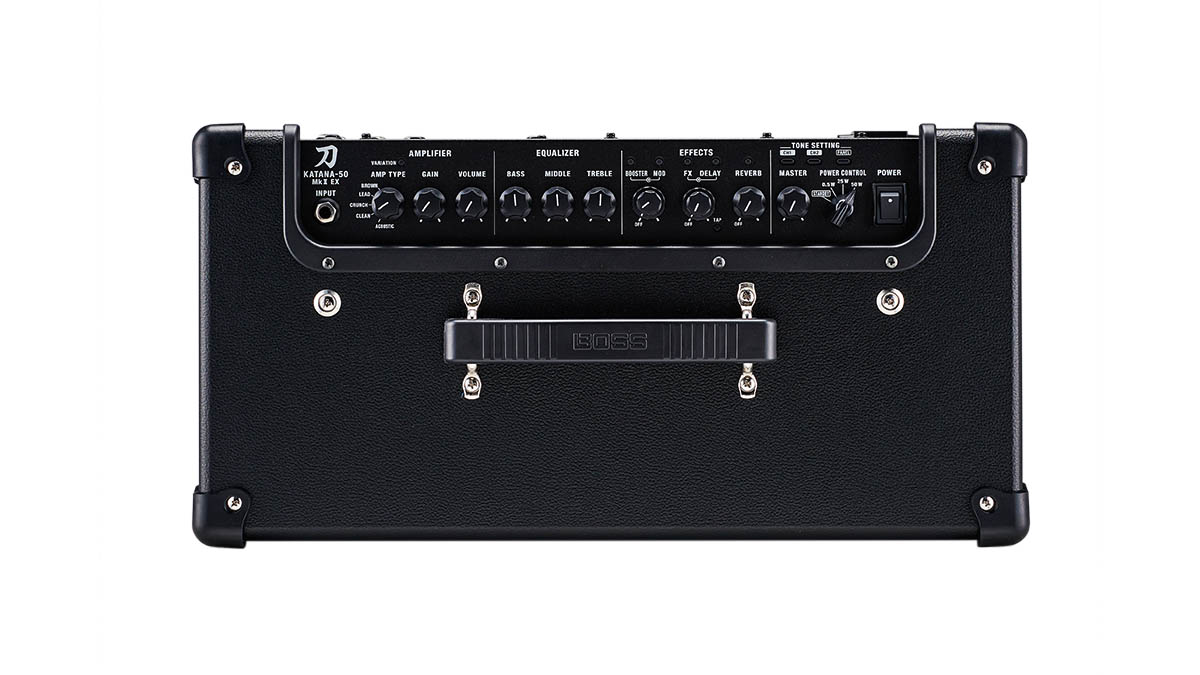Guitar World Verdict
Whether you're a beginner or a pro, the Katana-50 MkII EX is a truly remarkable amp both in its feature set and quality of tones – in today’s competitive market, it’s practically unbeatable.
Pros
- +
Intuitive control layout.
- +
Tap tempo.
- +
Five amp voices with five variations covers a lot of ground.
- +
Lots of top-quality effects.
Cons
- -
Footswitch sold separately.
You can trust Guitar World
There’s plenty of reasons why Boss’s Katana digital modelling amps have become so popular – one of the most obvious being they’re astonishing value for money, packing in highly realistic amp tones alongside boutique-grade effects at prices that seem almost too good to be true.
Following its debut in 2016 alongside the acclaimed Waza Craft Head, the Katana range rapidly grew to include Artist, Mini and Air (wireless) options, with a widely-acclaimed Mark II upgrade that added extra voices and effects.
Now, Boss has given their best-selling Katana-50 MkII combo amp yet another upgrade and called it the Katana-50 MkII EX. ‘EX’ stands for Expanded and that’s essentially what’s going on here. The same Katana features we’ve come to love are still there, with five dual-voiced amp types and over 65 built-in effects that provide a great mix of essential and funky boutique virtual stompboxes to play with.
The new EX version keeps the same reassuringly familiar knobs and switches, while adding a Power Amp In jack for connecting external modelling preamps, a cabinet-simulated Line Out jack and a socket for the GA-FC foot controller, letting you access saved tone settings as well as switching individual effects and toggling the solo level boost. From the GA-FC, you can add footswitches together with expression pedals for volume swells, wah and pitch-bending effects.

Add a second Katana-50 MkII and you can also expand your tone into the stereo domain, with the GA-FC EX controller running both amps simultaneously. Stereo effects bring the Katana into a different league – for example, if you want to experience proper chorus it has to be in stereo; Roland popularised the chorus effect, first using it in the JC-120 Jazz Chorus amplifier, before transplanting the analogue electronics into the legendary Boss CE-1 Chorus Ensemble, way back in 1976.
The Katana-50 MkII EX’s sounds are even more impressive in stereo, especially the chorus, which accurately recreates the spatially shifted ambient magic of the original.
Apart from the lack of an effects loop, it’s really hard to find fault with the EX; the spookily valve-like Tube Logic sounds are highly responsive - our favourites are both variations of the versatile Crunch voice and the Waza-approved Brown Sound for scorching leads.
All the latest guitar news, interviews, lessons, reviews, deals and more, direct to your inbox!
Meanwhile, the re-vamped Tone Studio partner app lets you save patches and explore the Katana’s secret custom settings, including comprehensive parametric and graphic EQ options.
From beginners to seasoned professionals, the Katana-50 MkII EX has something to offer for everyone – EX might stand for expanded, but could easily mean exciting and exhilarating, not to mention offering extra bang for your buck.

- Boss Katana vs Line 6 Catalyst: Which should you buy?
Specs
- PRICE: $339 / £345
- TYPE: Digital modelling, 50-watt 1x12” combo amp
- CHANNELS: Five amp voices and five variations, 4 programmable patches in 2 banks of 2
- OUTPUT: 50 watts RMS class AB output stage, switchable to 25 watts, 0.5 watts and Standby for silent recording
- SOCKETS: Single input jack, cabinet-simulated line out, power amp in, headphones/recording output, aux input, USB type ‘B’ for recording and connection to desktop Tone Studio app
- WEIGHT: 11.7kg
- DIMENSIONS: [HxWxD] 470 x 398 x 238mm
- FINISH: Black vinyl with black speaker grille
- CONTACT: Boss
Nick Guppy was Guitarist magazine's amp guru for over 20 years. He built his first valve amplifier at the age of 12 and bought, sold and restored many more, with a particular interest in Vox, Selmer, Orange and tweed-era Fenders, alongside Riveras and Mark Series Boogies. When wielding a guitar instead of soldering iron, he enjoyed a diverse musical career playing all over the UK, including occasional stints with theatre groups, orchestras and big bands as well as power trios and tributes. He passed away suddenly in April 2024, leaving a legacy of amplifier wisdom behind him.



